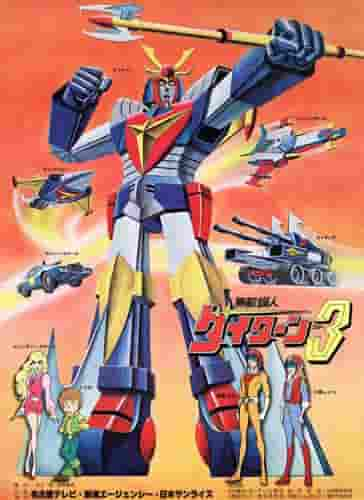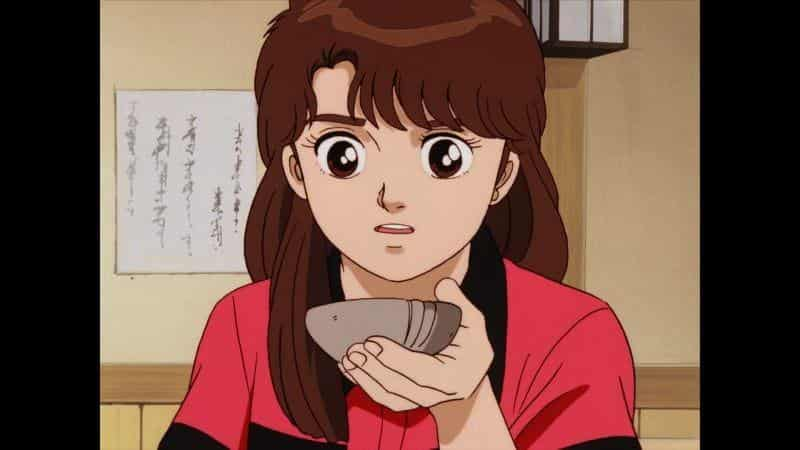The appeal and evaluation of Invincible Steel Man Daitarn 3: A monumental achievement in robot anime

Invincible Steel Man Daitarn 3: A Masterpiece of Super Robot Anime■ Public MediaTV anime series ■ Original MediaAnime Original ■ Broadcast periodJune 3, 1978 - March 31, 1979 Every Saturday 17:30 - 18:00 ■Broadcasting stationNagoya TV ■Frequencieshalf an hour ■ Number of EpisodesEpisode 40 ■Original StoryOriginal story by Hajime Yatate and Yoshiyuki Tomino ■ DirectorGeneral Director: Yoshiyuki Tomino ■ ProductionNagoya TV, Sotsu Agency, Nippon Sunrise ■Works© Sotsu, Sunrise ■ StoryThe Meganoids are secretly plotting to turn all of humanity into cyborgs. However, one man appears who boldly stands up against their ambition. A young billionaire and the pilot of the super robot, Daitarn 3... His name is Banjo Haran! Banjo has a cool and cheerful personality, but deep in his heart burns with anger towards the Meganoids. In fact, it was Banjo's father who developed the Meganoids, and his mother and brother were used as test subjects. Together with his friends, Banjo destroys the Meganoids one by one, and finally makes his way to Mars, where the Meganoids' base is located. A huge explosion follows a fierce battle, but is Banjo safe? The story ends with a lingering impression, leaving the mystery unsolved. ■ExplanationThis is the second title produced in-house by Sunrise. It is a work that combines robot anime with hero action like American sci-fi TV dramas and spy action movies, and comedy drama. While based on a light-hearted atmosphere created by unconventional character design, it also delves deeply into the inner lives of the characters, and introduces dramatic elements that set it apart from previous robot hero anime, such as the exaggerated movements of the robots. In addition, the setting and story left some mysterious parts, giving fans the fun of speculating and imagining them. Another distinctive feature of this work is that different character designers are used for enemies and allies. ■Cast
■ Main staff
■Subtitle
The appeal and evaluation of Invincible Steel Man Daitarn 3Invincible Steel Man Daitarn 3 is a robot anime that aired from 1978 to 1979, and its unique world view, character settings, and storytelling have captivated many fans. This work was the second title that Sunrise produced in-house, and it is full of new attempts that went beyond the boundaries of robot anime at the time. Characters and storyThe main character, Banjo Haran, is a young, wealthy man who harbors a deep anger towards the Meganoids. Behind this anger is his father, who developed the Meganoids, and his mother and brother, who were used as test subjects. This personal desire for revenge is an important factor that drives Banjo's actions. Banjo's bright and cool personality also made a strong impression on viewers, and he was loved by many fans. Banjo's companions are also unique, with each character playing their own role to liven up the story, including Sanjo Reika, Beautiful Tachibana, Toppo, Garrison Tokita, Korosu, and Don Zauser. In particular, Reika's pure love, Tachibana's flamboyance, and Toppo's humorous side left a deep impression on viewers. The story depicts Banjo and his friends' exploits as they fight to thwart the Meganoid's ambitions. Each episode features a different battle with a Meganoid, culminating in a showdown on Mars. At the end of the story, the fate of Banjo was left a mystery, leaving viewers with a strong impression. This type of storytelling encouraged viewers to think and imagine, enhancing their immersion in the work. Production and designInvincible Steel Man Daitarn 3 is characterized by its direction and design, which sets it apart from conventional robot anime. It incorporates elements of American science fiction TV dramas and spy action movies, and aims to fuse them with hero action and comedy dramas. This creates a light-hearted atmosphere and theatrical robot movements that entertained viewers. Character design was handled by Norio Shioyama and Kazukazu Oguni, and they took the innovative approach of creating separate designs for enemies and allies. This allowed each character's personality to be portrayed more clearly, resulting in many characters that viewers will remember fondly. The mechanical design by Kunio Okawara was also an important element in enhancing the appeal of Daitarn 3. Music and SoundThe music was composed by Takeo Watanabe and Yu Matsuyama, who played an important role in enhancing the worldview of Daitarn 3. The theme song and insert songs in particular touched the hearts of viewers and left a strong impression on the work. Additionally, sound direction by Noriyoshi Matsuura also effectively produced the battle scenes and dramatic scenes. Broadcast and influenceInvincible Steel Man Daitarn 3 was broadcast on Nagoya TV every Saturday from 5:30 to 6:00 p.m. and concluded as a 40-episode series. This work was a huge success as a Sunrise in-house production, and had a huge influence on later robot anime. In particular, the method of delving deeply into the inner lives of characters and storytelling that leaves behind mysterious settings have come to be incorporated into many works. Recommendations and reviews for Invincible Steel Man Daitarn 3Invincible Steel Man Daitarn 3 is a work that should be recognized as a milestone in robot anime. Its unique worldview, character settings, and storytelling left a strong impression on viewers and created many fans. In particular, the story depicting the protagonist Haran Banjo's personal desire for revenge, his cheerful personality, and the bonds he has with his comrades deeply moved viewers. In terms of direction and design, too, it was packed with attempts to set it apart from conventional robot anime, entertaining viewers. This work was a new attempt that went beyond the framework of 1970s robot anime, and its influence is still reflected in later works. In particular, the technique of delving deeply into the inner lives of the characters and storytelling that leaves a mysterious setting have come to be incorporated into many works. Invincible Steel Man Daitarn 3 occupies an important place in the history of robot anime, and is a work that provides viewers with strong emotions and enjoyment. If you haven't seen Invincible Steel Man Daitarn 3 yet, we highly recommend that you give it a watch. Its unique world view, character settings, and storytelling will leave a strong impression on viewers and create many fans. And even for those who have already seen it, it is a work worth rediscovering its appeal. Invincible Steel Man Daitarn 3 is a work that should be passed down forever as a monumental achievement in robot anime. |
Recommend
"Crazy Alien" prison version poster Huang Bo is locked in a cage by aliens
The movie "Crazy Alien" will be release...
Toshio Suzuki: Hayao Miyazaki's new film promotion will follow the example of Slam Dunk
According to Sina Film, Studio Ghibli producer To...
Netizens create a "live-action" version of "Attack on Titan" to see how similar the main characters are
The super popular anime "Attack on Titan&quo...
New stills from the spin-off series "Burning Flames for a Beautiful World!" will premiere on April 5
The new spin-off of the classic anime light novel...
The appeal and evaluation of COPPELION: Review of the DVD included with the October 2013 issue of Monthly Young Magazine
COPPELION - Hope and despair in the ruins ■ Publi...
Resident Evil: Dead Island is now available on all major video platforms
Capcom’s official blog announced that “Resident E...
A thorough analysis of the appeal and emotion of "The Melody the Wind Gatards"! Reevaluating the masterpiece from "Minna no Uta"
The melody the wind gave me - Everyone's song...
Akihabara card store in Japan: Otakus who don’t shower and have strong body odor and don’t deodorize are not allowed to enter the store
A trading card store in Akihabara has attracted a...
The police officer was shocked! The latest clip of "Bumblebee" shows overtaking and transformation in the tunnel
Today, Paramount Pictures released a "speed ...
Discussing the pain of modifying memories! The well-received masterpiece "PET" TV animation is scheduled to be released in January 2020
The TV animation of "PET", based on the...
Producer: Halo TV series won't please everyone, complexity similar to Game of Thrones
Kiki Wolfkill, director of Halo cross-media, shar...
"Beauty and the Beast" musical casting makes people complain about Belle becoming a plus-size black person
Nowadays, people are constantly complaining about...
The latest episode of the popular new anime "Sunny Days!" is released, including the motorcycle race
The new original animation "Sunny Days!"...
Lady Gaga's Harley Quinn image released in first stills of Joker 2: Disyndrome
Today (February 15), director Todd Phillips relea...
The movie "The Great Bombing" has gone through many twists and turns and now it has been announced that the release will be cancelled
According to the latest news released by Sina Ent...









